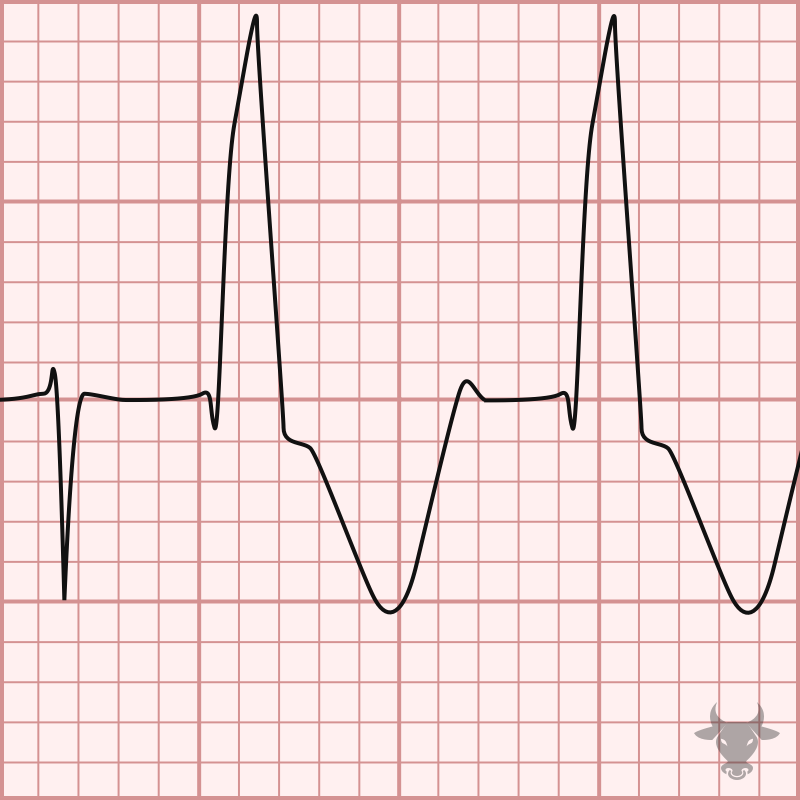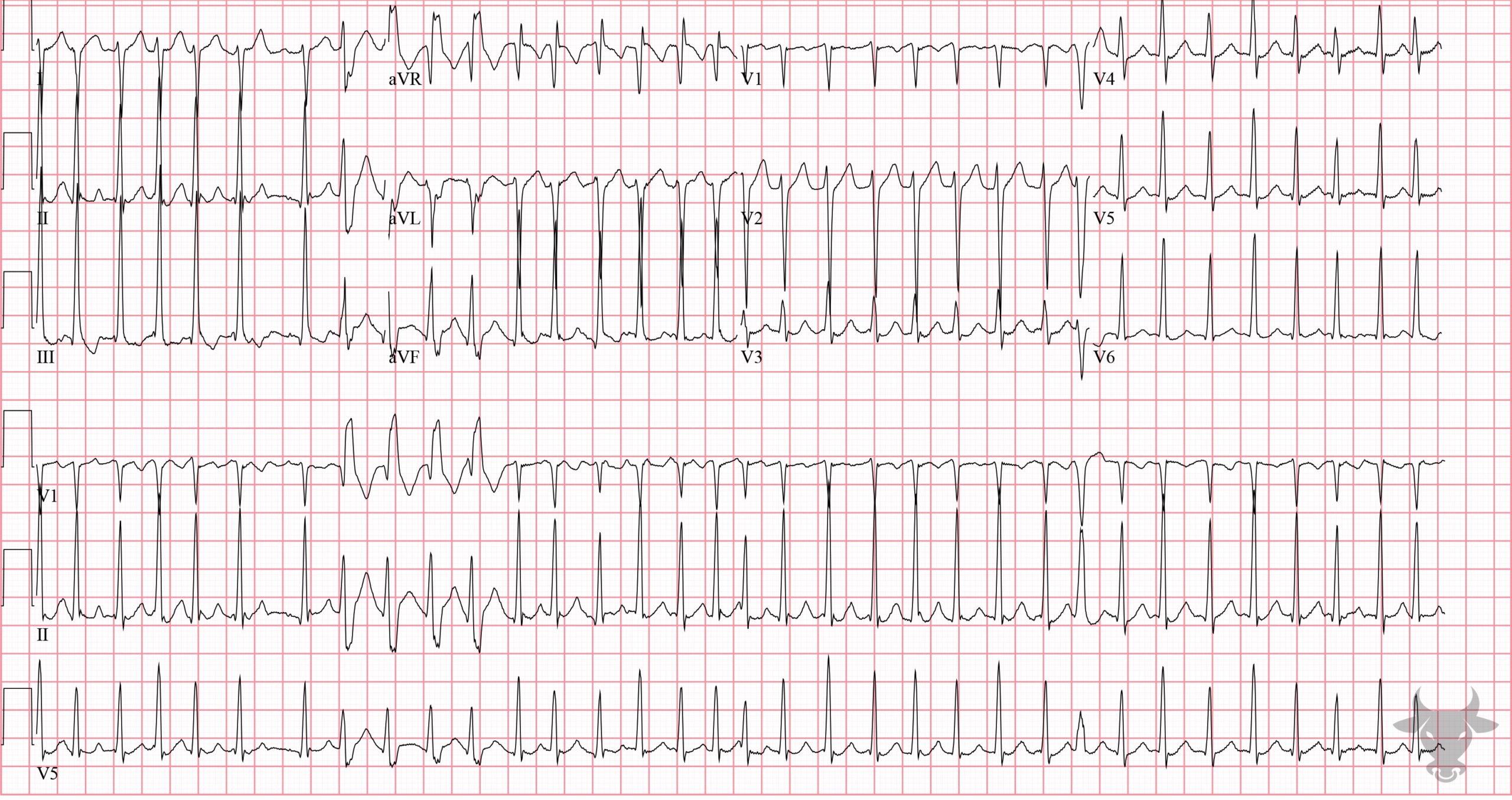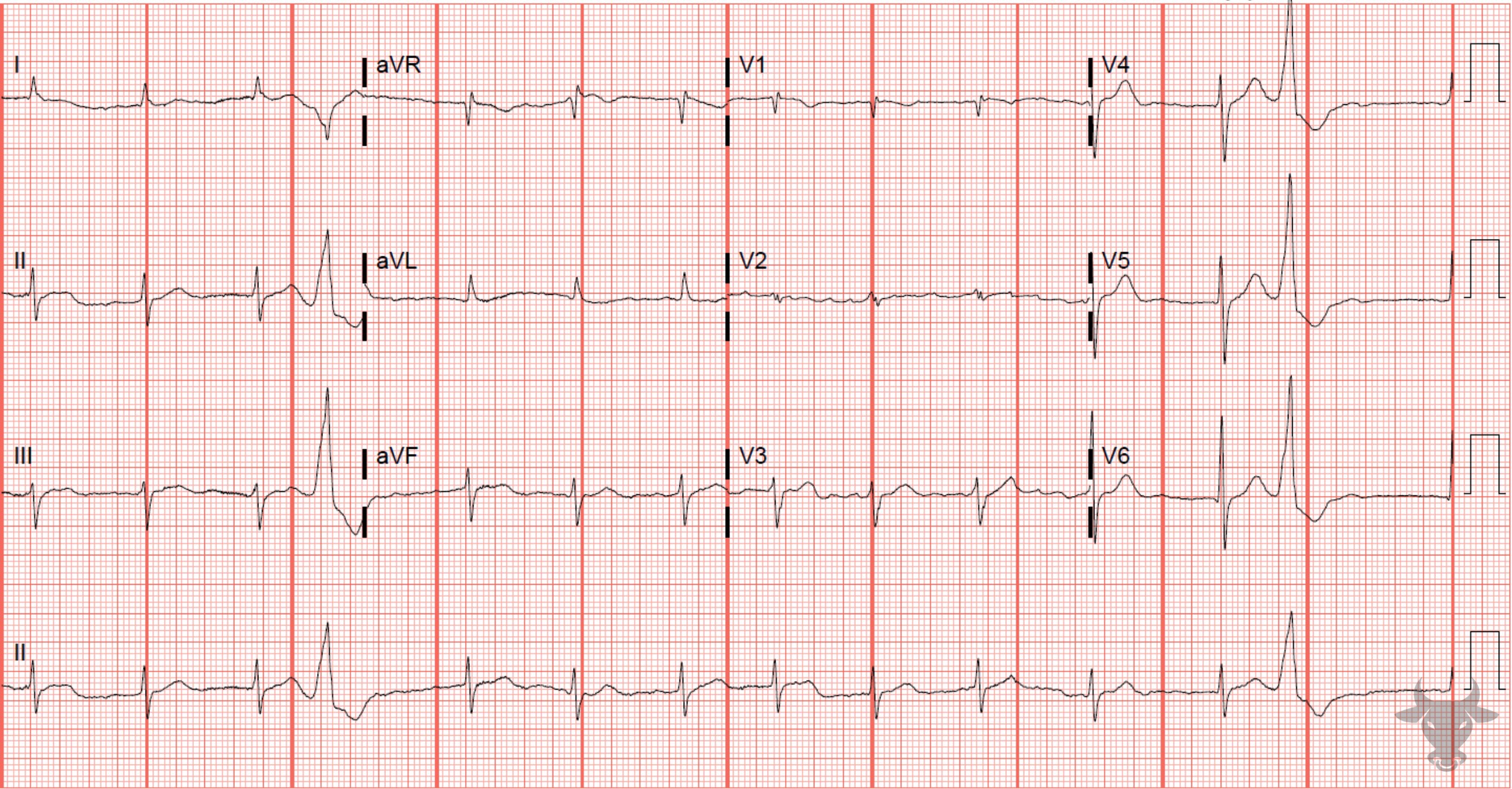This is a phenomenon first described in 1947 in which the refractory period of the conduction system is proportional to the length of the preceding cycle, resulting in aberrant conduction when a short cycle is preceded by a longer one. For instance, when a long R-R cycle is followed by a short one, the right bundle is still refractory resulting in an aberrantly conducted complex that has a right bundle branch block morphology. It is commonly mistaken for an ectopic beat. This phenomenon is usually seen in atrial fibrillation. Several consecutive aberrantly conducted beats can have the appearance of non-sustained ventricular tachycardia when, in fact, they are explained by Ashman phenomenon.
Ashman Phenomenon

Examples

Ashman Phenomenon
There is a series of aberrantly conducted beats with wide QRS complexes and unifocal morphology near the beginning of the rhythm strip consistent with Ashman phenomenon. It can be mistaken for non-sustained ventricular tachycardia when it occurs in series, as with this case.
Ashman Phenomenon
There are two aberrantly conducted beats with wide QRS complexes and unifocal morphology. In both instances, a prolonged R-R interval is followed by a relatively short R-R interval, which is then terminated by an aberrant beat, consistent with Ashman phenomenon.References
- Gouaux, J. L., & Ashman, R. (1947). Auricular fibrillation with aberration simulating ventricular paroxysmal tachycardia. American Heart Journal, 34(3), 366–373.
- Singla, V., Singh, B., Singh, Y., & Manjunath, C. N. (2013). Ashman phenomenon: a physiological aberration. Case Reports, 2013(may24 1), bcr2013009660–bcr2013009660.
- Lakusic N, Mahovic D, Slivnjak V. Ashman phenomenon: an often unrecognized entity in daily clinical practice. Acta Clin Croat 2010;2013:99–10
